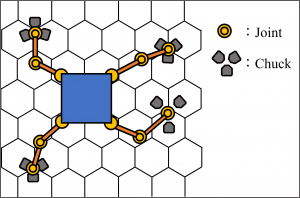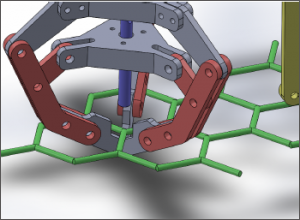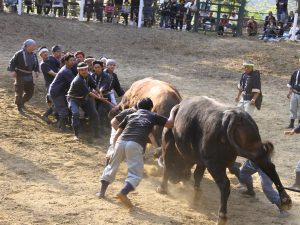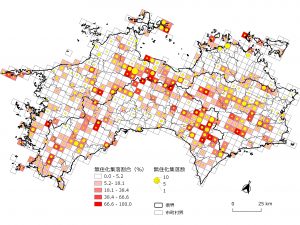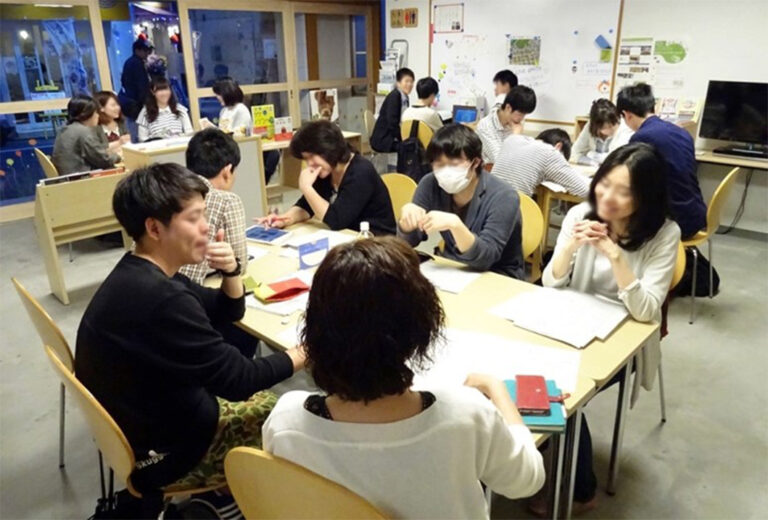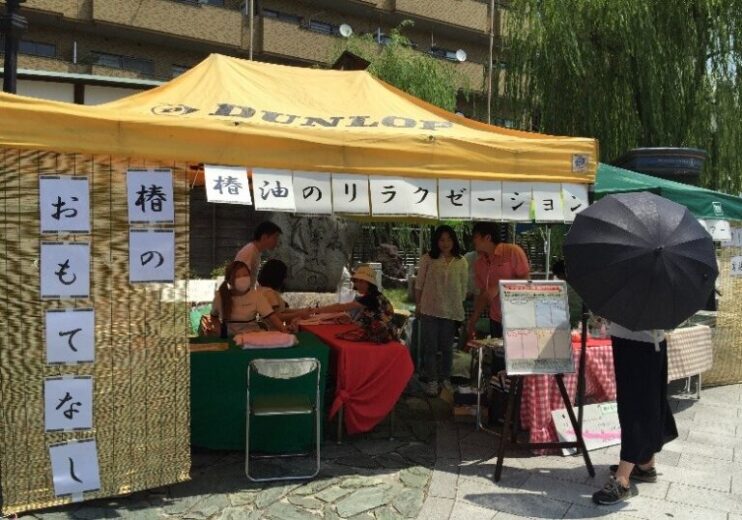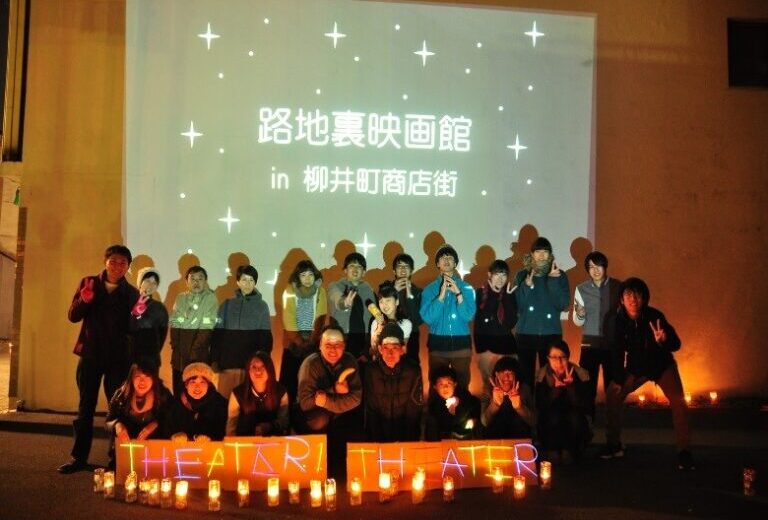Research topics
Industrial Management
Analysis of Consumer Behavior Related to Cross-Border E-Commerce
- Takashi Okamoto
Due in part to the rapid adoption of smartphones, online shopping and other forms of e-commerce have become commonplace, and the market is experiencing tremendous growth, with both domestic and cross-border purchases increasing. This is true for business-to-consumer transactions as well as those between individuals using flea market apps and other platforms. For consumers, this means a greater diversity of sellers to buy from as well as more opportunities to buy and sell goods, while for businesses it means expanded markets. Many municipalities hope that e-commerce will trigger regional economic revitalization.
However, various aspects of consumer behavior surrounding e-commerce and flea market apps are poorly understood, including the relationship between the rapidly growing use of social media and consumer behavior. Business strategies based on this kind of knowledge are essential for the continued growth of e-commerce. Understanding consumer behavior related to domestic and cross-border e-commerce will likely unlock opportunities for market expansion and support regional economic revitalization efforts. These are the motivations behind our research on consumer behavior related to e-commerce.
Research on “Work–Life-Balanced Businesspeople” in Declining Commercial Areas
- Nobuo Yamaguchi
I am interested in the phenomenon of a new breed of young entrepreneurs opening shops in declining commercial areas where rents have fallen. These young entrepreneurs appear to share the following characteristics:
1. They offer quality products and services. They do not sell at bargain prices.
2. They prefer to renovate their shops themselves and are successful despite operating on a shoestring budget.
3. They prefer to live and work at the same location or nearby. They value work–life balance.
4. Their shops are open relatively few days per week (e.g., 3 days per week), or close as necessary (e.g., no fixed schedule).
5. Compared with typical business owners, they have little desire to expand their business.
I refer to these young entrepreneurs as “work–life-balanced businesspeople.” They are not constrained by their business but instead prioritize time with their families, keep the scale of their operations modest, and reflect their personal preferences in many aspects of their business. In declining commercial areas where businesspeople matching this description have naturally gathered, a positive feedback loop of revitalization often occurs. I am interested in the mechanism that gives rise to this feedback loop.
Industrial Innovation
Robots for Cleaning Net of the fish-pen
- Tomonori Yamamoto
The rapid aging of Japan’s population is lead to labor shortages in many industries, including the fishing industry, which is an important part of the economy in Ehime Prefecture. Improving the labor environment in this type of industry is crucial to preserving Japan’s food system.
The use of robots is being considered in many sectors to compensate for worker shortages and assist people with their work. Advances in computer science and mechatronics have set the stage for these developments. However, primary industries such as agriculture and fishing still rely heavily on human capabilities.
With these factors in mind, we began research aimed at reducing workloads in the fishing industry in general and aquaculture. Our first project is the automation of fish-pen cleaning. Presently, the primary methods for cleaning these pens are either diving or lifting the pens out of the water with a crane and blasting away seaweed and other detritus with high-pressure water. However, these are large and dangerous undertakings that can cause significant stress to the farmed fish.
We are developing a small, scalable system that does not use high-pressure water, requires little energy, and has a minimal impact on fish. For example, we are considering developing a robot hand, as shown in the figure, to grab the fish net and move over the net.
Research on the quality of fish meat
- Taiju Saito
Our laboratory aims to develop aquaculture technologies for a new aquaculture fish species, kawakawa (Euthynnus affinis), which belongs to the same tribe as bluefin tuna. Kawakawa grow rapidly, reaching a body weight of more than 2 kg in 7 months under aquaculture conditions. The taste is similar to that of bluefish tuna, and kawakawa is rich in omega-3 fatty acids. To date, we have developed several key technologies, including a hormone injection technique and an optimized seedling production system, that have facilitated full-cycle aquaculture in this species. In this process, kawakawa eggs are artificially collected from hormone-stimulated parents, raised to juvenile fish, and then grown to their market size in pens. Parent fish are carefully selected based on their traits and reared in pens at Ehime University for the purpose of kawakawa aquaculture in Ehime Prefecture.
My research interests include variations in genetic traits such as muscle quality, flavor, preservation characteristics, and nutrient composition. This research will lead to new methods of selective breeding based on quality traits in kawakawa. However, evaluation of quality traits such as taste is not so easy because taste is a subjective perception and is thus difficult to measure using standardized scores. As such, we took a simple approach to address this problem, constructing a large-scale dataset about the quality of kawakawa in order to extract the characteristics associated with good flavor. So far, we have constructed a dataset based on more than 1,200 individuals, with 152 measurements per fish. We have already found some heritable traits that can affect the taste of kawakawa, and we are utilizing some of them as markers for selective breeding.
Manufacturing friendly to people and the environment using paper technology
- Hirokazu Ito
We study green composites, a type of material combining pulp, the material from which paper is made, and plastic. By replacing some of the petroleum-derived plastic with cellulose, a renewable resource, green composites reduce the quantity of plastic being used. In addition, because cellulose is a type of fiber, it is stronger than conventional plastic. We are currently conducting product research on various alternatives to plastic-based products. We are also researching the potential application of cellulose to add functionality to paints and other resinous materials. Cellulose not only provides reinforcement to fibers but it can also interlock with fibers to form a network. By utilizing this network, it is possible to add qualities to paint that have previously been difficult to achieve, such as a stronger paint film and greater durability and acoustic qualities. We are developing this technology for application in wood products such as musical instruments and building materials. This research contributes to environmental sustainability by reducing the use of petroleum resources and enabling recycling.
Environmental Design
Cultural resource management in rural Japan
- Hiromasa Watanabe
Much can be learned from studying how rural communities deal with crises. In addition, the way in which communities manage cultural resources and practices can provide insights into what holds them together. One such example is Ushi-no-Tsunotsuki (English: bullfighting) as practiced in the Higashiyama district of Ojiya, Niigata Prefecture, which boasts a 250-year history and is the only bullfighting practice designated as an Intangible Folk Cultural Asset in Japan. Bullfighting was banned in the Meiji period but survived by adopting a “draw” rule that avoided negative effects such as injury and the incentive to gamble (Figure 1). Following the devastating 2004 Niigata Chuetsu Earthquake, the practice continued despite many of those involved losing property and family members. Bullfighting also proved to be a cultural practice that those involved could rally around with a sense of purpose. This important role was only recently recognized within the community, a fact that highlights the importance of understanding how collective and autonomous management of cultural resources can contribute to community life and resilience. Such work is also relevant for understanding how and why rural settlements decline and eventually become depopulated. Although Japan’s population decline has been widely studied, countermeasures generally focus on revitalization and infrastructure management, with little attention paid to meso-macro scale trends in settlement abandonment. Sometimes overlooked in statistical datasets, the combination of public geospatial data and geographic information system analysis can help understand the actual status of settlements undergoing depopulation (Figure 2) and how their resources are used.
- Photo 2: Drawing (literally ‘pulling’ cows by human power)
- Figure 2: Estimated distribution of settlements undergoing depopulation across Shikoku’s four prefectures.
Fostering community development leaders through designing spaces
- Yuka Kataoka
In many local cities, there is an urgent need to find a way to develop human resources for community development in order to maintain the region’s existence. Since 2014, we have been partnering with Urban Design Center Matsuyama, which designs public spaces through public–private–academic collaboration, to run a school to foster leaders in urban development. This program emphasizes the study of community development in collaboration with the local community as well as the application of initiatives in real-life community development.
In our research, we investigate the activities of schools designed to foster leaders, focusing on the activity process and the awareness of participants regarding place attachment, and examine how community development learning can be translated into regional cooperation and real-life community development activities, something that has not been thoroughly examined in previous studies, as well as how to best develop human resources. In addition, an analysis of students suggested the importance of designing a place where students can not only acquire knowledge and skills in community development but also experience being a leader in community development. It is thus essential to consider ways to make the program more effective as well as fun and interesting for the participants and communities involved.
- Urban Design School 1
- Urban Design School 2
- Urban Design School 3
Regional Resource Management
The Archaeology of Salt Production and the Topographical Environment in East Asia
- Keisuke Makibayashi
In addition to my position in the Faculty of Collaborative Regional Innovation, I also work at the Research Center for Asian Archaeology of Industry and Culture at Ehime University. On islands in the Seto Inland Sea as well as several coastal areas in East Asia, my colleagues and I are researching aspects of salt-making sites in various era, the changes in the topographical environment of the coast, and relationships thereof.
Elucidating unrecorded periods of human history is of obvious importance to a wide range of different scientific fields. By looking closely at coastal topography, not only in Japan but in other parts of East Asia, I hope to make significant contributions to the fields of archaeology and history. In addition, I believe that our findings will help to clarify the differences in geological data related to beach ridges and coastal sand dunes. I expect that this will prove useful to various fields of environmental science as well.
In Japan, the salt industry has long produced salt by using salt fields to evaporate sea water. However, analysis of sites in East Asia has revealed that salt production in coastal areas depends on the suitability of the coastal topography. It has also become clear that in areas of China along the East China Sea, various methods of salt production in addition to the use of salt fields have existed since ancient times.
New Developments in Community Revitalization Centered on Direct-Sales Produce Retailers
- Atsushi Yamafuji
In 2010, a total of 16,816 produce stands across Japan were selling produce and other agricultural products from nearby farms, outnumbering Lawson convenience stores (13,111 in 2017). In Ehime Prefecture, four such stands make more than a billion yen in sales each year. The Saisai Kite-ya market in Imabari, a city of only 180,000, boasts yearly sales of 2.8 billion yen, among the highest in the country.
Farm stands are appealing to consumers because they offer products that are safe, fresh, and locally produced, while providing small-scale and elderly farmers an opportunity to earn income. Consumers form closer connections to local farmers, develop loyalty to particular growers, and become aware of farms near them. Some direct-sales produce retailers supply food for school lunches. Schools gain access to fresh, seasonal produce without having to pay exorbitant shipping costs, and in some cases the presence of a direct-sales produce retailer nearby has increased the percentage of local produce used in school lunches. Direct-sales produce retailers with high yearly sales also employ large numbers of local residents.
In the coming years it will not be easy for small-scale and elderly farmers to sustain regional agriculture on their own. One group of farmers supplying a direct-sales produce retailer responded to this challenge by forming an agricultural corporation to produce scallions used at restaurants and elsewhere. The corporation proactively employs individuals with disabilities and pays them over three times the national average, providing jobs for a group of workers with limited employment opportunities.
Science for promoting people’s physical activity
- Naofumi Yamamoto
Introduction
To achieve my dream of a society in which no one goes without adequate physical activity, I am working to solve immediate problems one by one that I (or we) are capable of taking on, and that contribute to my dream goal.
Main Research Activities
1. Epidemiological research on the cause-and-effect relationship between physical activity and health
As a member of The Steps for Health, an international collaborative working group, I have reported on high-quality evidence regarding the association between daily steps and mortality (Paluch et al., Lancet Public Health, 2022).
2. Practical research on developing positive physical activity habits
This project, based on knowledge from the fields of physical education and behavioral science, aims to incorporate physical exams and the promotion of physical activity into societal systems.
Conclusion
The negative effects of insufficient physical activity are equal to those of smoking, causing an estimated 5.3 million deaths worldwide every year (Lee et al., 2012). We are experiencing a global pandemic of inadequate physical activity, and the solution to this problem is a critical public health challenge. I look forward to working with any student who is passionate about sports and physical activity.

